

Learning from other modelers is a major benefit of the NMRA. Below is a list past clinic presentations by various members and guests that shared their skills. We are extremely appreciative of the efforts put forward by the presenters. Click on a title for additional details of that clinic.
Jim discussed fundimental LED and incandescent lighting circuits. He also took us through a step by step approach to light up a structure. The clinic includes plenty of illuminated structure photos as well as a list of tools, components and sources to complete your projects. He's included a copy of his LED resistor selection Excel spreadsheet.
Click HERE to download a copy Jim's Clinic.
Click HERE to download a copy Jim's LED resistor selection spreadsheet.
Gary described how to use a 3D filament printer to make ties jigs for traditional and dead rail track, switches and speciality items. Examples of Z, N, HO, S and O track were passed around for an in-person presentation and photos for the remote presentation. The clinic covered the use of free downloadable files and demonstrated the process to design your own file. Optimized use of dead rail track will be covered in a companion clinic “Can Battery Power Be Free And Is It Time for Battery HO?”
 Photo of a 3D printed HO Scale No. 6 turnout
Photo of a 3D printed HO Scale No. 6 turnout
Click HERE for Gary's Clinic Notes & Photos.
The CNJ Newark branch
by Jonathan Jones
Jonathan brings his architectural training and outlook to urban layout design. Jonathan models the Newark branch of the Central Railroad of New Jersey in his Brooklyn, NY apartment. He will highlight aspects of the CNJ and the gritty dense industrial urban right-of-way that captured his interest. Next he will review how he incorporated selected elements into his design. Jonathan’s Jones modeling is a combination of traditional realistic representation and abstraction that is unusual and quite unique. One of his takeaways is "if everything is important, nothing is important."
Brian gave a complete view of how to plan urban scenes. He also gave us a tour of his very detailed Long Island RR Layout.
Mike's International Rail Fanning photos and accounts are always interesting. This one was no exception.
Steve gave us another excellent clinic on moving "Other" livestock by rail. This included an in-depth discussion of the poultry industry equipment and markets, movement of fish minnows for stocking by the USDA, as well as other small livestock.
Edward presented two series of photographs detailing the construction of 4 new tracks into New York's Grand Central Station. The first showed the initial phases after the digging of the tunnels (18 stories below grade!) The second set covered the current status of the project near completion of one of the largest public works projects.
Eric discussed prototype details of ballasting and techniques on how to use inexpensive Polymeric Sand to create realistic ballast on his O Scale layout.
Jim Osborn followed up with a subsequent live HO Scale ballasting demo using tools to simplify and speed up your ballasting tasks.
Click HERE for a copy of " Eric's Polymeric Sand for Scenery Clinic" (20 MB download.)
Click HERE for a list of "Tools for successful ballasting."
that eliminate hand pipette or eyedropper gluing of your smaller scale ballasted track.
John gave us a complete description of his methodology in building these cars.
Mike gave us an overview of how he determined the routing of a reefer on his railroad using historical track routes in the midwest.
Bob Wundrock MMR®, from the South Central Wisconsin Division presented a clinic featuring his ops session visit to the San Diego Model Railroad Museum in 2009. In it he also covered some history plus photos and video from each of the five layouts in the museum.
In the years prior to 1970 it was common to see stock cars on American Railroads. Horses (primarily until the 30s), cattle, sheep, goats, and hogs were regularly shipped across the country to provide horsepower and food for Americans. Since these are living creatures, special treatment was necessary to keep livestock from becoming dead freight! And yes, you could find the stock car hauling grain, tomatoes, or rail. Steve will discuss the procedures, rules, forms, cars, stock pens, feeding stations - everything required to make this industry function.
In the years prior to 1970 it was common to see stock cars on American Railroads. Horses (primarily until the 30s), cattle, sheep, goats, and hogs were regularly shipped across the country to provide horsepower and food for Americans. Since these are living creatures, special treatment was necessary to keep livestock from becoming dead freight! And yes, you could find the stockcar hauling grain, tomatoes, or rail. Steve will discuss the procedures, rules, forms, cars, stock pens, feeding stations - everything required to make this industry function.
Bob took us through the 15 steps on how to develop a scene. I this case it was a propane delivery facility. Thanks to Bob for an excellent presentation.
A Closer Look at Track does exactly what the title says: using numerous prototype photos we saw track from the subroadbed up to the ballast, the ties, the tie plates, rails, rail joiners, and other elements of railroad track such as culverts, ditches and guard rails with the goal of making us more aware of details that are so easy to overlook, and yet deserve to be modeled more precisely on our layouts.
Dan gave a very interesting presentation on the world's fist monorail railroad. The Lartigue RR ran between Listowel & Ballybunion, Ireland. It was built in 1888.
Click HERE for Dan's Clinic Notes & Photos.
Ken gave a detail overview about what's required to 3D print with liquid materials. Thanks go out to Ken for his excellent clinic.
Ken had 2 parts to his clinic. You can download parts 1 and 2 handouts plus the actual presentations of both parts in PDF formats.
Click HERE for a 2 page handout of part 1 of Ken's 3D Clinic.
Click HERE for a 2 page handout of part 2 of Ken's 3D Clinic.
Click HERE for part 1 of Ken's 3D Clinic.
Click HERE for part 2 of Ken's 3D Clinic.
Clinic Presentation: The History of Cardboard Structures by Dave Lull
DuPage Division member Dave Lull took us down memory lane with a comprenhensive review of cardboad structure kits from many suppliers of the time. He also displayed many of his own models built from these kits.
Clinic Presentation: Weathering with PanPastels® by John Drozdak
FVD member John Drozdak gave us a thorough demonstration using these versitile powders to realistically weather your locomotives and rolling stock.
Clinic Presentation: Two Prototype Steam Engine Overhauls by Chuck Rita
Chuck narriated two excellent videos on rebuilding a Durango and Silverton loco plus an old British refirbishing loco facility form the 1930's
Clinic Presentation: Interchanges by Scott Payne
Scott discussed the use of interchanges by the prototypes and then why and how we should incorporate them on our layouts.
Clinic Presentation: Simple NCE Turnout Control by Mike Wood: The first part of my presentation will focus on the use of the NCE Switch_IT-2 and I will lead into the Switch_IT-8. When I spoke with several members quite a while ago, they expressed interest but most felt that "programming" and "macros" were intimidating. My intent is to show the simplicity of the Switch-IT 2 and that no knowledge of how code, programming or macros is needed, just a few entries on your NCE cab to set things up. The second part of the presentation I will lead into the Switch_IT-8. I will expand on the similarity of the Switch_IT-8 versus the Switch_IT-2. I will introduce the additional capabilities the listener can take advantage of with two basic examples: Example 1) is for those who have existing turnouts wired up for push button operation and want to add the Switch_IT-8 into the mix. Example 2) introduce the concept of Macros to allow control of multiple turnouts simultaneously. I believe I have a way to present this material in a way that will be easy to remember.
Click Here for Mike's presentation notes in MS Word format. (3.8 MB Download)
Click Here for Mike's presentation notes in PDF format. (1 MB download)
Click Here for Mike's presentation in MS Power Point format. (Note: 625 MB download)
This power point file contains the identical text as the presentation notes but includes "how-to" videos embedded in the presentation. Look for the notations indicating an embedded video.
Gary Saxton shared information about a new electrical connector at the meet.
Click Here for the link to Ali Express - about 3+ weeks for delivery
Click Here for the link to Amazon marketplace.
Clinic Presentation: Grain and Railroads by Mark Vaughan: Mark gave us an insider's view of the Grain Industry and the role the Railroads play in it.
Clinic Presentation: Tips and Hacks by Jerry Kruger: Jerry covered numerous ideas of using commonly available tools and supplies in novel and unexpected ways to help build and maintain your model railroad. Very informative with lots to put on our “to do” lists, guaranteed.
Clinic Presentation: Dining on the Rails by Marita Richards A brief history of railroad dining cars will be presented. In addition dining car service instructions which included detailed table set ups in the diner, the use of tableware, the variety of tenures, the life of the dining crews and more will be explained. Dining in the rails was an “experience like no other."
Marita developed a handout with reference material for this presentation.
Click HERE to download Marita's handout.
Rich gave us a very detailed historical description of the old International Harvester (McCormick) railroads of South Chicago and Indiana through modern times.
George gave us a very detailed description of basic and advanced consisting programming as well as function mapping using the Zimo decoders.
Gary discussed several approaces to using the inexpensive Aduino computer and IR detectors to control signals on your pike.
Gary has developed a handout with reference material and a copy of his presentation.
Click HERE to download Gary's handout.
Bob Took us through a description of his modernized hard shell scenery technique using hot glue, nylon screen, foam board and NO bandaides! Read all about it in the January Semaphore. Bob's "Ground Goop" recipe is also included.
You can read about the whole scenery process in the attached downloadable article by Bob
Click HERE to download Bob's article (1MB).
We also saw an excellent YouTube video "A Teen/Tween Explores Chicago's Railroads - The Sequel 1975-78 by Steve Brown" - If you missed the viewing, click the link below.
It's an excellent photo blog of the 1975 equipment rolling on the Chicagoland rails.
https://www.youtube.com/watch?v=Gz-SUeVdnik
Mike gave us a photo blog plus the ins and outs of booking and taking a trip on the Conway Scenic Railroad in Maine. He also rode and shared pictures of the Mt. Washington Cog Railroad ride in New Hampshire.
In Eric's clinic he presents how to plan for a layout move to a new location as well as wiring and construction techniques. He infact experienced 5 such moves.
In "Building Billboards for the Baden Vogt and DeSmet" Dave presents how to make custom billboards, as implemented on his HO scale model railroad.
Click Here to visit Dave's very comprenhesive web site. You can view his entire clinic. He also lists sources, templates, material, jigs, and many other references.
Jim covered his journey of completing the 8 cars necessary for the Railroad Equipment - car AP category.
Click Here to download a copy of Jim's Clinic
Steve gave a detailed photo record of the removal and reconstruction of a prototype junction. The Duplainville, Wisconsin crossing of the Canadian Pacific and the Canadian National is one of the busiest action spots in Wisconsin for rail fans with 50 or more trains per day. In the summer and fall of 2020 the railroads did a complete replacement of the existing diamond and removed the interchange track. His presentation recounted the sequence of construction events from August until November and provided modelers many ideas for adding details to their layouts.
Charles Malinowski (CID) introduced us to making paper based building flats in the February clinic. There was a lot of interest in his presentation using Evan Designs Software.
Phillip took us through the 3D design process from research to CAD drawings to printed parts of a "Bags Building" for a concrete industrail complex on his layout.
Here are a few notes from the clinic:
Cad Software packages: Auto Cad (get the home version). Fusion 360, FreeCAD
Slicer Software packages (converts CAD files to printer files): Simplified3D/software/features/, CURA, PrusaSlicer
Do not use ABS printing material. Phillip likes Poly Smooth - PLA
Steel Mill IG Group: https://smmsig.org/

Phillip Burnside
Eric shared his recommendations on good wiring practices. He went over all the tools & materials that you need to keep your wiring and documentation organized and in good order. He has offered two PDF handouts for your reference.
Click Here for a list of wiring resources.
Click Here for a list of wiring materials.
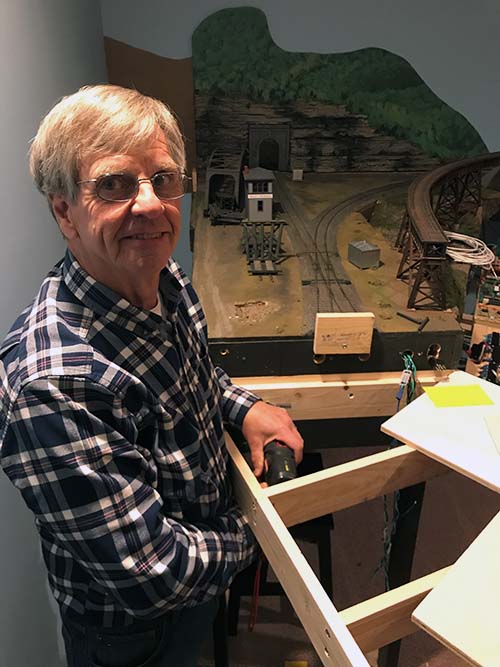
Eric Peterson
Paul gave us an overview of the NMRA's LCC standard in use.
Click Here if you are interested in learning more about the LCC system and protocols.
Steve gave an overview of "Cad-rail 9" and what you can use it for beyond layout design.
Click Here to download a Steve's Clinic (1M PDF)
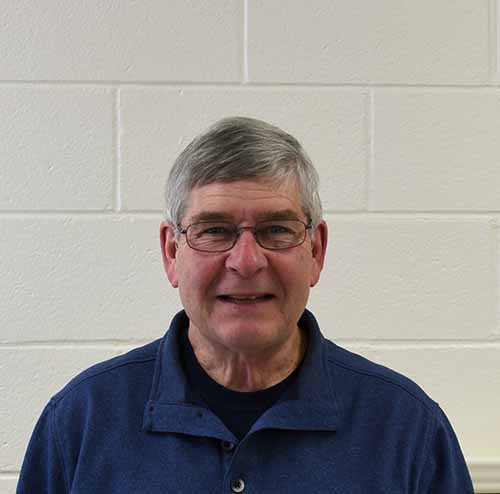
Steve Miazga
Gary discussed the pros, cons and precautions of his inexpensive laser cutter. Gary models in Z scale and brought some impressively detailed models as part of his demonstration.
Click Here to download a copy of Gary's Clinic Notes (small PDF)
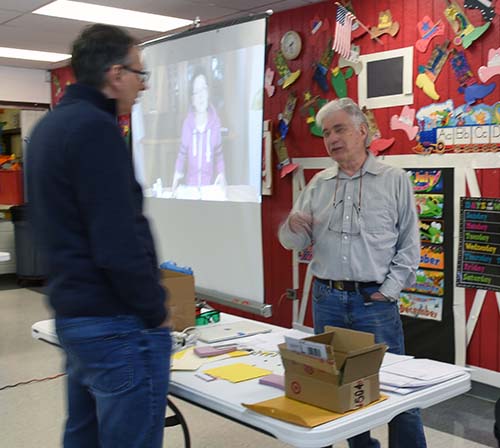
Gary discussing the attributes of the laser cutter with George K.
George K. George covered various electronic track sensors and how they can be used for your layout electronics.
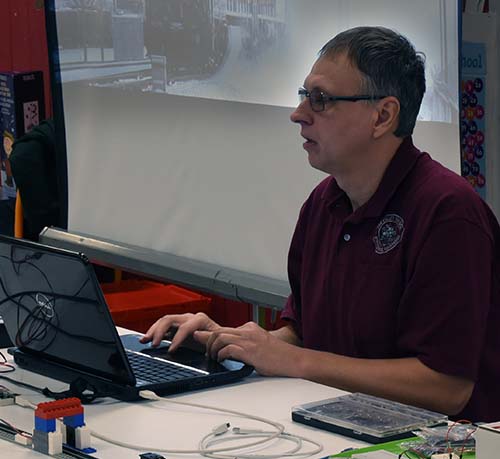
Bob covered the history of the Misabie mines, railroads and the GN division. He also included photos from his very detailed home layout of the GN Misabie division.
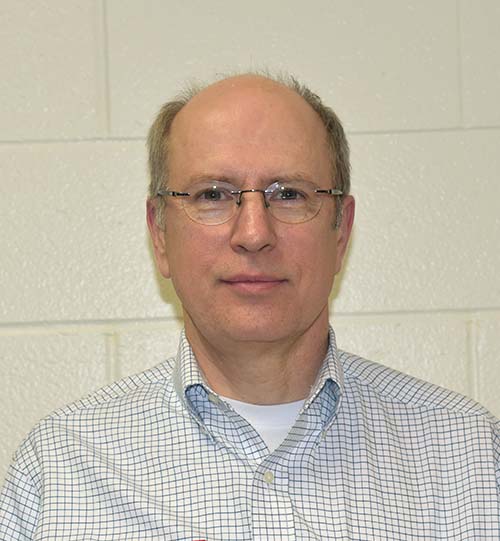
Mike shared his rail photos of his recent trips to Japan
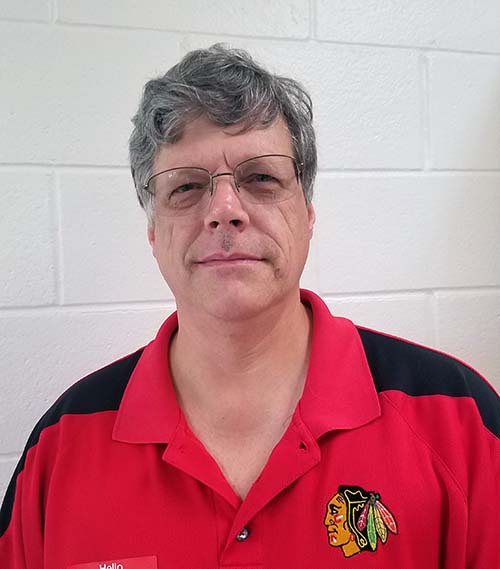
The always entertaining Mark Llanuza presented two outstanding slide shows. Mark's rail photography is world class!

Carl demonstrated how easy it is to use AnyRail software to create detailed track plans with embedded structures and other objects.
Jim demonstrated how to create completely focused photographs using your camera or smart phone along with inexpensive (or even free) digital imaging software. “It’s really easier than you think.”
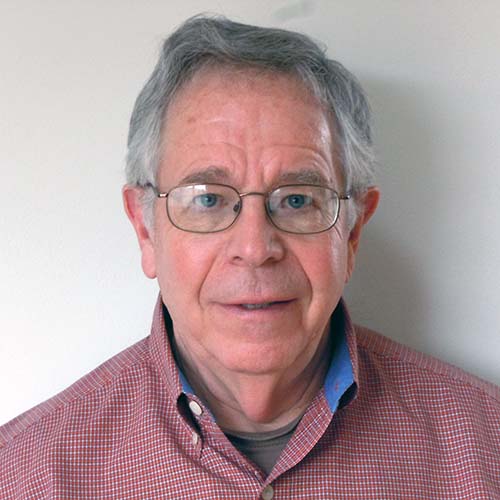
Click Here to download a copy of Jim's Focus Stacking Clinic Notes (small PDF)
George continued his series on these miniature computing devices showing us how to use them for DCC Accessories, Turnout control and Throttles.

No notes are available from this clinic.
Mike's grew up in Two Rivers and consequently has detailed knowledge of his home town. He gave us an extensive look at the origins of the town from over 100 years ago, through his time living in the town and what it looks like today.
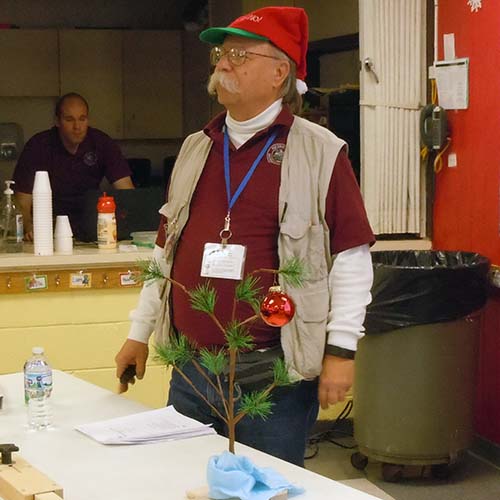
No notes are available from this clinic.
Bob has researched the development and use of Inductive Train Communications that started in the late 1940's. His presentation covered the many railroads that used the technology.

No notes are available from this clinic.
Rick shared many prototype and model photos of various Junctions, Interchanges & Diamonds for your Model Railroad.
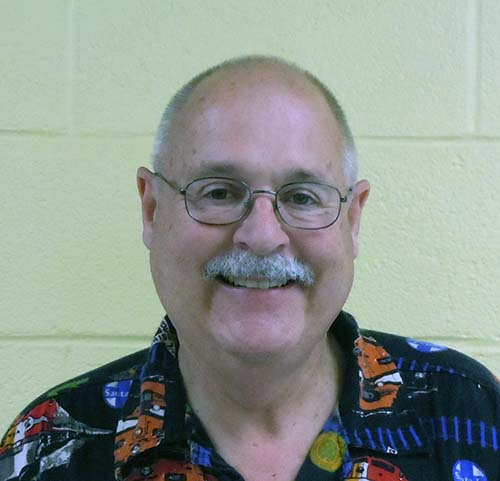
No notes are available from this clinic.
Steve gave a very detail discussion about the history and evolution of tank cars.
No Notes are available on this clinic.
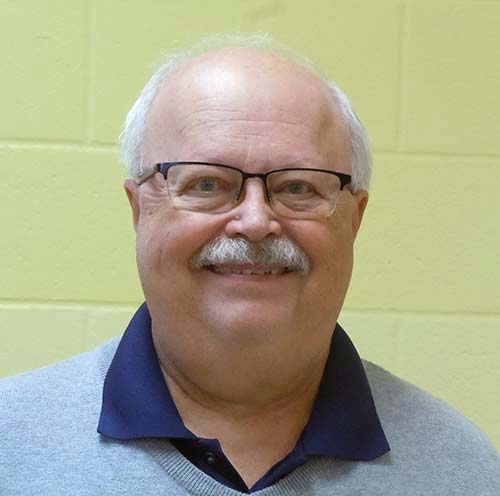
Steve Hile
George Discussed the Timetable used for the Clichfield RR"
No Notes are available on this clinic.
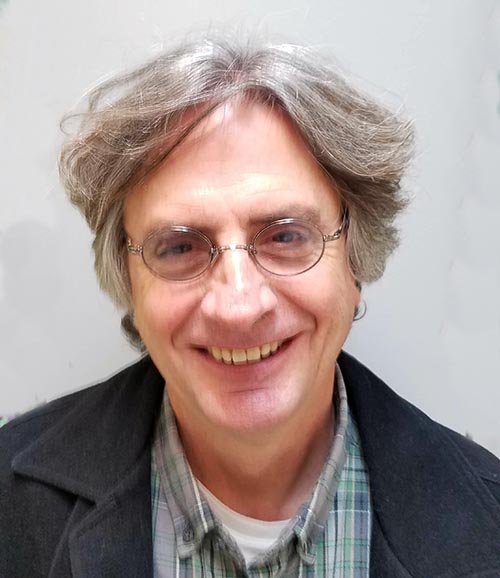
George Trandel
Pete took us through the evolution of four railroads up to and including the "Great Midwestern" which by the way is featured in the 2018 issue of MR's "Great Model Railroads"
No Notes are available on this clinic.
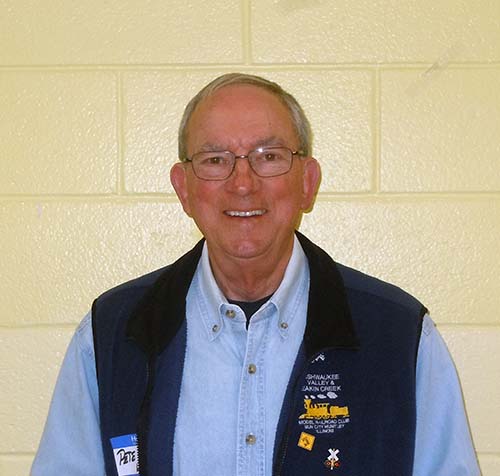
Pete Walton
No Notes are available on this clinic.
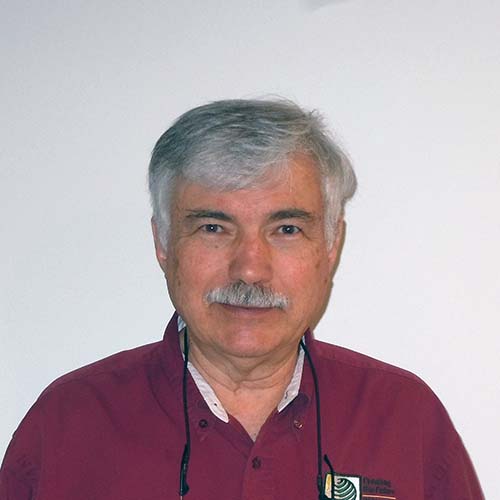
Gary Saxton
Click Here to download a copy of Art's Ground Goop Recipe and Clinic Notes (small PDF)

Art Jones

Ground Goop Module

Ground Goop Demo

George is performing a live demonstration of the Adruino throttle.
No notes are available from this clinic.
The DuPage Division's Fred Henize entertained us with "Ramblings of an Old Railroader..
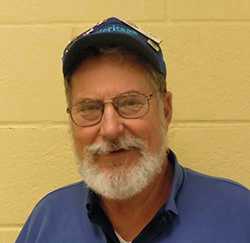
No notes are available from this clinic.
The Fox Valley Division’s webmaster Jim Osborn gave the division a brief tour of his C & NW, Western Division, railroad and then an overview of the main elements of the automatic signally system he operates on the pike.
Click Here to download a copy of Jim's reference notes.

Rick shared many prototype photos of quick and easy industries we can add to out pikes.

No notes are available from this clinic.
David gave a review of how he designed his prototypically accurate 1947 Waupaca Railroad and how he is now rebuilding it on portable modules.

No notes are available from this clinic.
Chris gave us an overview of how train priorities, rights & track authority under TTO rules can apply to model railroad operations.

No notes are available from this clinic.
Many thanks to to George for sharing numerous photos of his Railfanning trip to Southern Africa. His photo montage featured the luxurious Blue and the Rovo Trains as well as many spectacular photos of the countryside and wildlife of the region.
Click Here to see several of George's spectacular photos.

Bob Hanmer discussed the Duluth Missabe Iron Range operations as well how he modeled them on his highly detailed pike. Bob uses prototypical timetable and train order rules in his operating scheme.
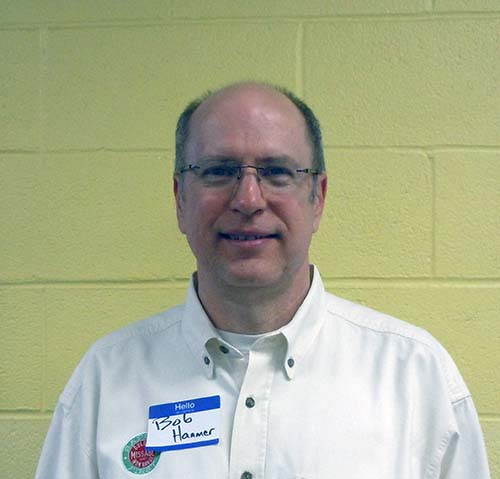
No notes are available from this clinic.
Dave Phillips presented a timely update about operation lifesaver reminders. He also showed a number glass plate high resolution slides from the Chicago & Northwestern Historical Society archives. Dave is appealing to all railfans to support the construction of the new CNWHS archive building to be located at the IL RR museum with a donation to the CNWHS.
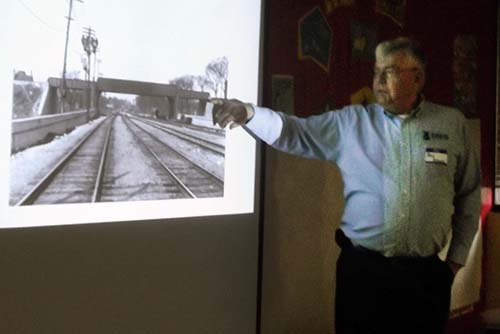
Special Guest Speaker Gary Cohn of GoodDealsDCC, the manufacturer of the “test tracks” on the table, had the audience in stitches listening to how he started with an idea and how it is now featured on MR Video Plus, had a booth at Train Fest, meeting the Kalmbach guys, and his success thus far making these test tracks in various single gauges and mixed gauges, too, sending them all over the country.
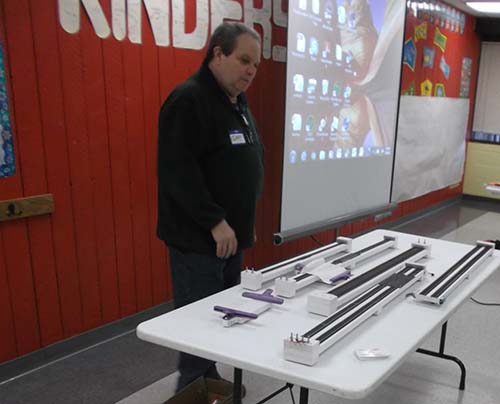
No notes are available from this clinic.
Click Here for a copy of Mike's clinic presentation.
(This is a 3MB PDF document.)
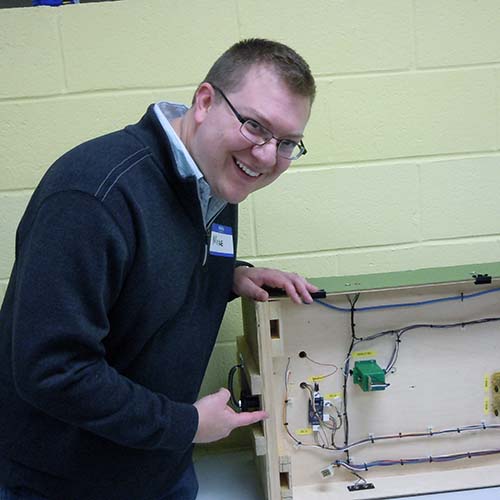
Click above on the clinic link to to learn about the MiniModutrak story. Contacts are listed for various tools and equipment they use in the construction of the modules.
Click this link to go to the MiniModutrak website to see some of the wonderful scenes on the MiniModutrak modules.
http://www.modutrak.com/
Click Here for a copy of Brian's clinic presentation.
(This is a 1MB PDF document.)
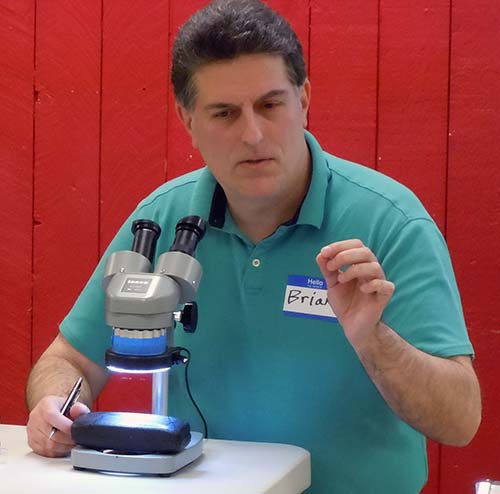
Brian takes us through the methods and tools useful to model Z and smaller scales
Foot note: The jeweler files Brian referenced can be found at:
http://www.ottofrei.com/Store/Glardon-Vallorbe-Swiss-Made-Escapement-Files/

George is performing a live demonstration of the Adruino throttle.
No notes are available from this clinic.

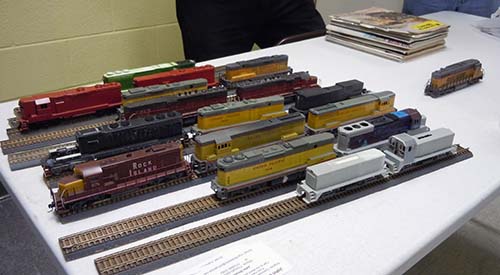
No notes are available from this clinic.
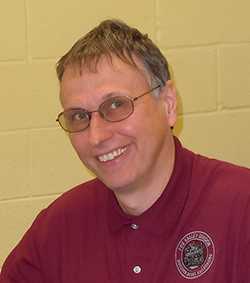
No notes are available from this clinic.
Click Here for a copy of the clinic presentation.
(This is a 6MB PDF document.)
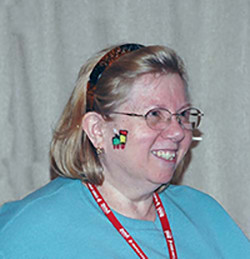
Click Here for a copy of the clinic presentation.
(This is a 10MB PDF document.)

Click Here for a copy of the clinic presentation.
(This is a 5.5MB pdf document.)
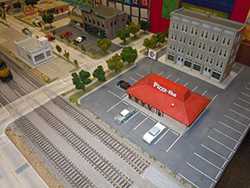
Click Here for a copy of the clinic presentation.
(This is a 1MB pdf document.)
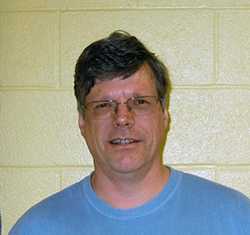
Click Here for a copy of the clinic presentation.
(This is a 5MB pdf document.)
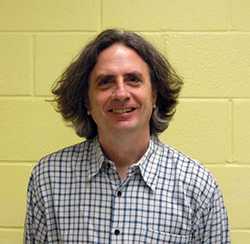

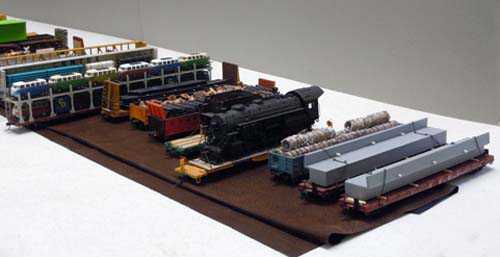
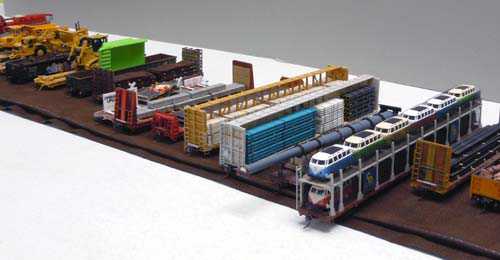
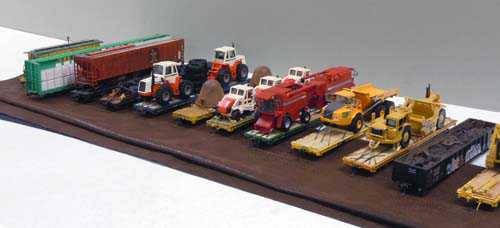
No notes are available from this clinic.
Click Here for a copy of the notes David distributed.
(This is a 50kB pdf document.)
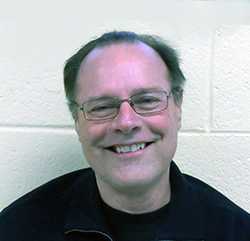
Click Here for a copy of the clinic presentation.
(This is a 0.5MB pdf document.)
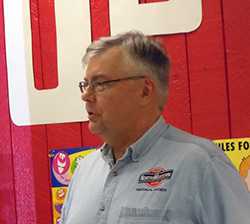
Click Here for a copy of the clinic presentation.
(This is a 1.1MB pdf document.)
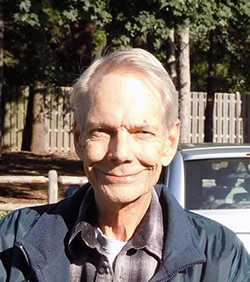
Click Here for a copy of the weathering supply and tool handout.
(This is a 83kB pdf document.)
Click Here for a copy of the clinic presentation.
(This is a 5.4MB pdf document.)
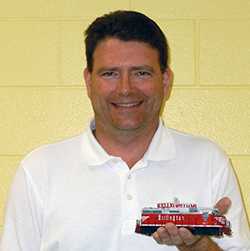
Click Here for a copy of the clinic presentation.
(This is a 0.75MB pdf document.)

Click Here for a copy of the AP Structures Application and Guide.
(This is a 83kB pdf document.)
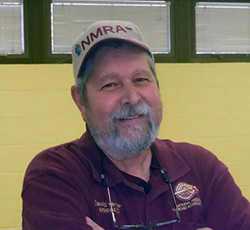
Click Here for a copy of the clinic presentation.
(This is a 5.3MB pdf document.)
Click Here to learn more about the Golden Spike Application.


No notes are available from this clinic.
Click Here for a PDF copy of the HO scale trolley contact and sources handout.
(This is a 18kB pdf document.)
Click Here for a PDF copy of the O scale trolley contact and sources handout.
(This is a 100kB pdf document.)
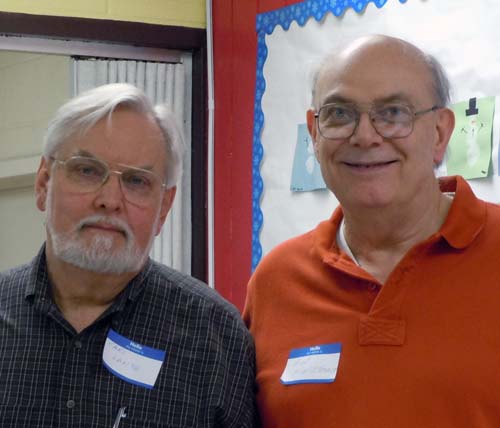
Click Here for a copy of Frank's presentation notes.
(This is a 45kB pdf document.)
Click Here for a copy of Frank's handout.
(This is a 70kB pdf document.)
Click Here for a copy of the clinic presentation.
(This is a 4.1MB pdf document.)
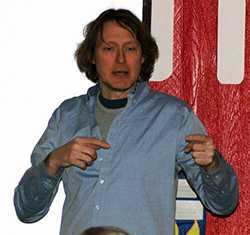
Click Here for a copy of the clinic presentation.
(This is a 160kB pdf document.)

Click Here for a copy of the clinic notes.
(This is a 5.4MB pdf document.)
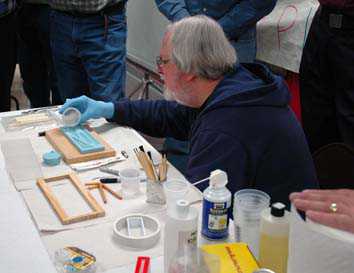
Click Here for a copy of the clinic presentation.
(This is a 20kB pdf document.)
Take a picture with the stick in it and then you can size the images in the picture by using the 1 foot scale marks of the stick.
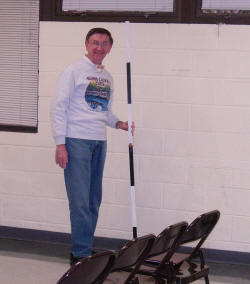
No notes are available from this clinic.
Stretch the paper on a board, paint it the desired color, cut the strips and then glue the paper to the model. You must use "Canopy Glue" to avoid getting wrinkles in the paper. The glue is used on RC model airplanes and available at RC plane hobby shops.
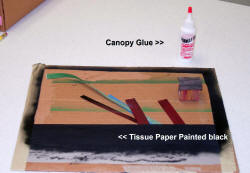
Leif Hansen devised a clever way to get lighting power to his model houses and still keep them movable between his work bench and the layout. He uses a Molex type electric connector on the bottom of the structure. Male on the structure and female on the layout board. Any similar type connector will work.
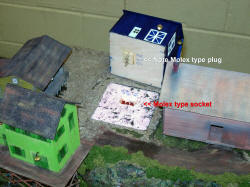
In this case it is a loading ramp with lots of stringer and rib supports underneath. His surface template defines the size, and also has spaced plastic strips added to make the various stringer and support assemblies.
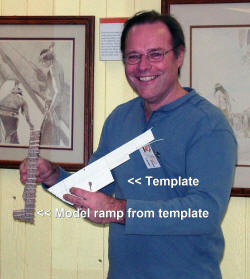

No notes are available from this clinic.